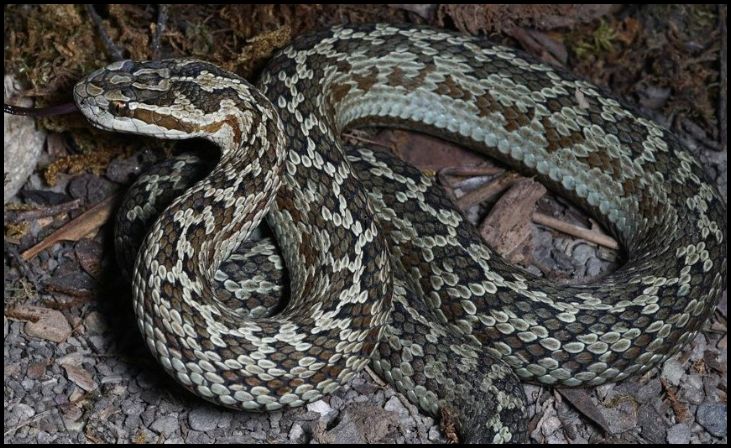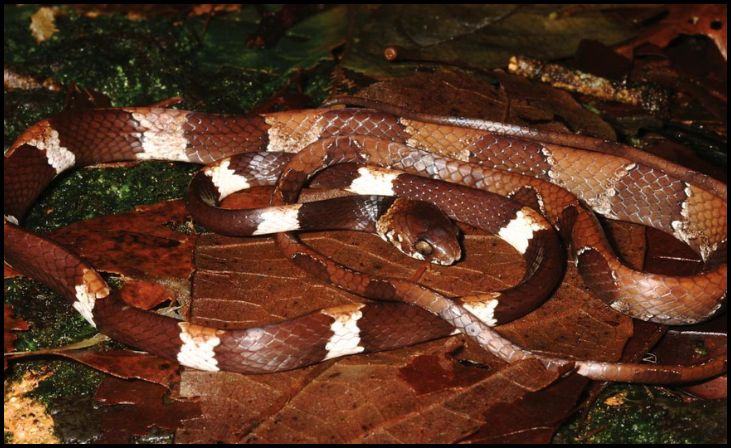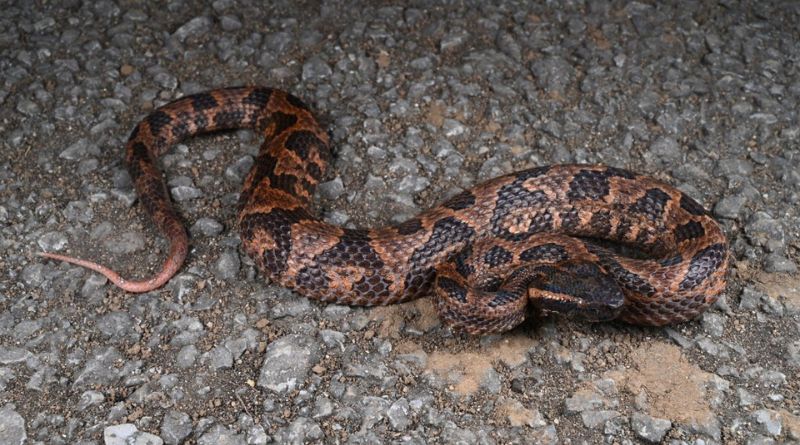Scientists in China have made a remarkable discovery, uncovering a new species of mountain pit viper known for its aggressive nature. Named Ovophis jenkinsi, this viper was found in the remote areas of Yunnan province, specifically Yingjiang County. This discovery not only highlights the unique biodiversity of the region but also emphasizes the importance of conservation efforts.
Discovery of Ovophis jenkinsi

Researchers have named the new viper species after the esteemed herpetologist Robert Jenkins, recognizing his contributions to the field. Ovophis jenkinsi stands out due to its distinctive coloration, which ranges from dark brownish-gray to deep orange-brown. The viper is marked by unique trapezoidal patches along its back, making it easily distinguishable from other pit vipers
One of the most striking features of Ovophis jenkinsi is its aggressive behavior. Unlike many other pit vipers, this species displays heightened aggression when disturbed. It has been observed to inflate its body and strike swiftly. Despite its typically slow movement, its aggressive nature and swift strikes make it a formidable presence in its habitat.
Unique Coloration and Markings
Ovophis jenkinsi’s unique coloration and markings are not just for show. The dark brownish-gray to deep orange-brown hues, combined with trapezoidal patches along its back, help it blend into its mountainous environment. This camouflage is a crucial survival strategy, allowing it to remain hidden from predators and ambush prey effectively.
Evolutionary Adaptations
The new viper species has evolved specific adaptations to thrive in Yunnan’s mountainous terrain. Its venomous bite is a significant evolutionary trait, ensuring its survival in a competitive ecosystem. The venom is used both for hunting and defense, making Ovophis jenkinsi a well-adapted predator in its environment.
Technological Advances in Discovery

The discovery of Ovophis jenkinsi underscores the role of advanced technology in modern wildlife research. High-resolution aerial photos and AI models were instrumental in mapping the viper’s habitat and identifying it as a new species. These technologies allow researchers to cover more ground and gather data more efficiently, leading to discoveries that might have been missed with traditional methods alone.
Significance of the Discovery
The finding of Ovophis jenkinsi highlights the rich biodiversity of Yunnan province. This region is home to a variety of unique species, many of which are still being discovered. The discovery of a new species underscores the importance of ongoing research and conservation efforts to protect these habitats and the species that inhabit them.
Conservation Efforts
The discovery of Ovophis jenkinsi brings attention to the need for conservation in Yunnan. The region faces ecological challenges, including habitat destruction and climate change, which threaten its biodiversity. Researchers urge ongoing conservation efforts to safeguard the diverse species that call Yunnan home. Protecting these habitats is crucial for the survival of species like Ovophis jenkinsi.
Challenges in Habitat

Yunnan’s mountainous terrain presents challenges for both the species that live there and the researchers who study them. The remote and rugged environment requires researchers to be well-prepared and resourceful. The discovery of Ovophis jenkinsi in such a challenging habitat is a testament to the dedication and perseverance of the research teams.
Impact on Herpetology
The discovery of a new viper species has significant implications for the field of herpetology. It adds to the growing body of knowledge about pit vipers and their behavior, ecology, and evolution. Each new discovery helps scientists understand more about these fascinating creatures and their roles in their ecosystems.
Public Awareness and Education
Raising public awareness about new species discoveries is crucial for conservation efforts. Educating people about the unique wildlife in regions like Yunnan can help garner support for conservation initiatives. Public interest in species like Ovophis jenkinsi can lead to increased funding and resources for research and habitat protection.
Future Research Directions

The discovery of Ovophis jenkinsi opens up new avenues for research. Future studies can explore the species’ behavior, ecology, and interactions with other species in its habitat. Understanding these aspects can provide insights into the broader ecosystem and how different species coexist and thrive.
Global Biodiversity
The discovery of a new species like Ovophis jenkinsi is a reminder of the vast and largely unexplored biodiversity on our planet. Many species remain undiscovered, particularly in remote and challenging environments. Continued exploration and research are essential for uncovering these hidden gems of the natural world.
Role of AI in Wildlife Research
The use of AI in wildlife research is revolutionizing the field. AI models can analyze large datasets quickly and accurately, identifying patterns and anomalies that might be missed by human researchers. The successful identification of Ovophis jenkinsi using AI is a prime example of how technology can enhance scientific discovery.
Conservation Policies

The discovery of new species like Ovophis jenkinsi can influence conservation policies. Governments and organizations can use this information to prioritize areas for protection and allocate resources effectively. Ensuring that policies are informed by the latest scientific discoveries is crucial for effective conservation.
Community Involvement
Local communities play a vital role in conservation efforts. Engaging with communities in areas like Yunnan can help protect habitats and species. Community-led conservation initiatives can be particularly effective, as they combine local knowledge with scientific expertise.




